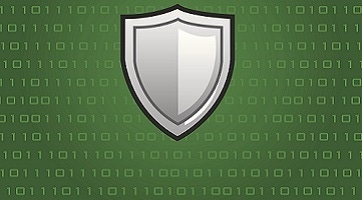Zero Trust Means Never Trust & Always Verify
Enterprise security teams have actually been practicing zero trust policies for a number of years, but new advances and better tools now make the philosophy easier to implement. Still, it's always best to verify.

Zero trust doesn't mean you don't trust anyone.
Of course, you trust people, you trust servers, you trust devices, you trust applications. Without trust, businesses couldn't operate or conduct transactions. But you need to verify. Always verify. So maybe you don't really trust anyone.
When IT security people talk about zero trust, think of it as taking the concept of least privilege to extremes: It means that you only trust people -- and servers and devices and applications -- on the inside of your network only to the same extent that you would trust people and things on the outside of the network.
In other words, you must assume that firewalls have been breached, the perimeter has fallen, employees have gone rogue, devices have been compromised and the CFO's phone is about to empty the company coffers.
Given that there are a myriad of ways for enterprise security to fail, this is a good philosophy. As former president Ronald Reagan would have said, "Trust, but verify." With zero trust, it's "Don't trust, always verify."

(Source: iStock)\r\n
A big proponent of zero trust is Forrester Research. Its researchers have noted:
"Zero Trust (ZT) threat prevention is increasingly critical to deny malicious attackers' access to enterprise assets. To accelerate their performance in ZT threat prevention, companies are evaluating and adopting a range of contributing technologies."
As an idea, there's nothing particularly new about the zero trust concept; it's been bandied about the security industry for a number of years. However, it's become easier to implement with the increased sophistication of the contributing technologies Forrester mentions, particularly identity and access management systems, especially those that can span multiple domains: enterprise data center, cloud-based services and mobile devices. Forrester terms all those technologies "next generation access" or NGA.
They love acronyms, but don't we all?
What defines zero trust?
In a blog post, "Next-Generation Access and Zero Trust," Forrester analyst Chase Cunningham writes that the capabilities behind zero trust are fairly straightforward. He offers four specific points:
Correlation between accesses and users (who is doing what, where and why)
Single sign-on (SSO) for users (making access control simpler is key)
Multifactor authentication (MFA) (reduces access threats exponentially)
Some form of machine learning or automation, not only to make the access "learn" to look for anomalies, but also to make things better for the users the more they use the system
Palo Alto Networks offers a similar set of recommendations:
Ensure all data and resources are accessed securely, based on user and location
Adopt a least-privileged access strategy and strictly enforce access control
"Always verify," meaning inspect and log all traffic
Add more authentication methods to counter credential based attacks
Never trust, always keep adding context and keep your roles up-to-date
Odds are good that your existing identity and access management (IAM) platform has many of those capabilities, including two-factor authentication (2FA), as well as fine-grained access controls for applications. It might even have location data, which is excellent. What may be missing from your IAM platform is the AI aspect -- machine learning to spot anomalies.
Zero in on the most attractive 5G NR deployment strategies, and take a look ahead to later technology developments and service innovations. Join us for the Deployment Strategies for 5G NR breakfast workshop in LA at MWCA on September 12. Register now to learn from and network with industry experts – communications service providers get in free!
Those anomaly detectors might catch an application access problem: "Why is the CEO's user account accessing the server backups at 2 a.m.?” An even more savvy system should go deeper: "Why is the CFO transferring funds to a bank we don't do business with at 2 a.m. from her smartphone in Asia, when an hour ago she was checking email from her laptop in Milwaukee?"
Zero trust should be focused on access, not people
In the examples above, note that we're not accusing the CEO or CFO of malfeasance, though it's possible the CFO was duped by a spear phishing spam email.
We're also not accusing their devices of being hacked, though that's possible as well. It's also possible that their IP addresses are being spoofed. That's where the zero trust comes in: We trust our people, generally speaking, but we don't trust everything else.
That's why 2FA is so important. That's why single sign-on (SSO) is critical. That's why we need to understand who is accessing what and whether there are anomalies.
The good news is that zero trust is finally becoming mainstream as an idea. We are starting to understand that we can't simply trust that if a device presents the proper password, everything is cool. We need zero trust: Check for anomalies. Challenge with 2FA. Know where your users are and where they are supposed to be. Give the least privileges possible. And always, always verify.
Related posts:
— Alan Zeichick is principal analyst at Camden Associates, a technology consultancy in Phoenix, Arizona, specializing in enterprise networking, cybersecurity and software development. Follow him @zeichick.
Read more about:
Security NowAbout the Author(s)
You May Also Like
Is AI Identifying Threats to Your Network?
May 14, 2024Where and Why Threat Intelligence Makes Sense for Your Enterprise Security Strategy
May 15, 2024Safeguarding Political Campaigns: Defending Against Mass Phishing Attacks
May 16, 2024Why Effective Asset Management is Critical to Enterprise Cybersecurity
May 21, 2024Finding Your Way on the Path to Zero Trust
May 22, 2024
Black Hat USA - August 3-8 - Learn More
August 3, 2024Cybersecurity's Hottest New Technologies: What You Need To Know
March 21, 2024


